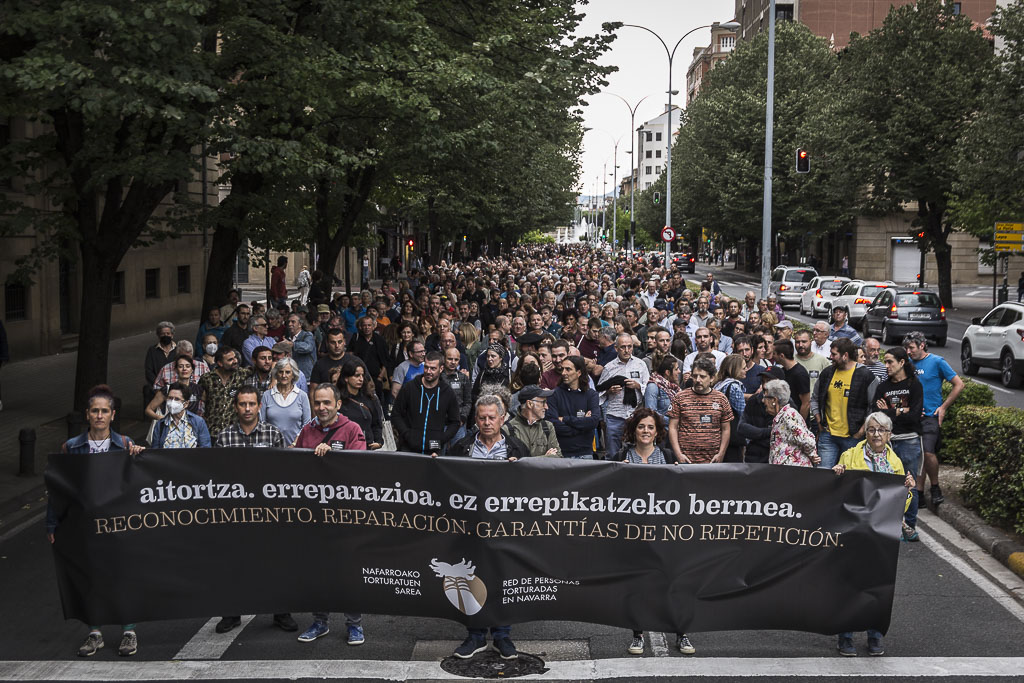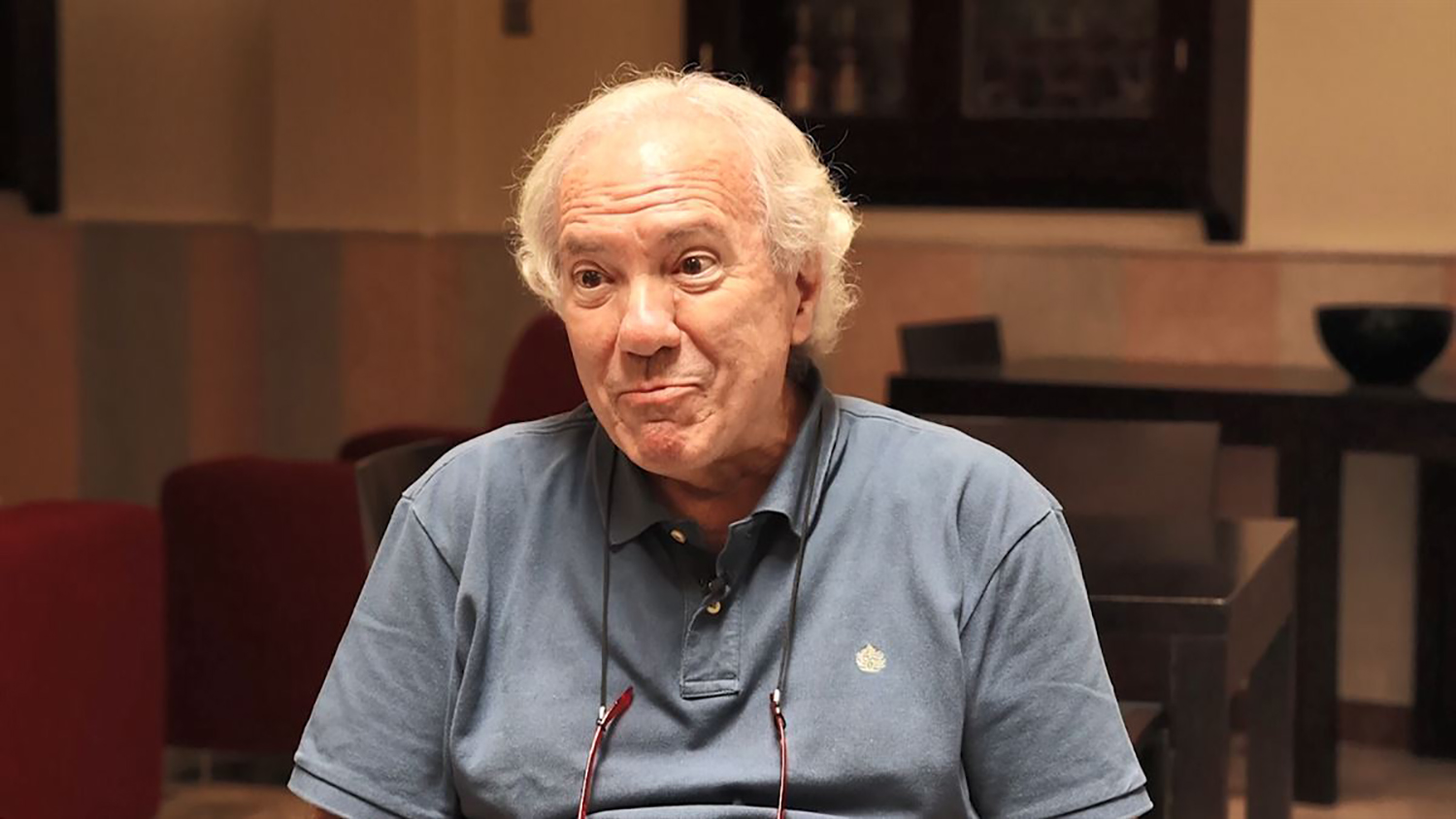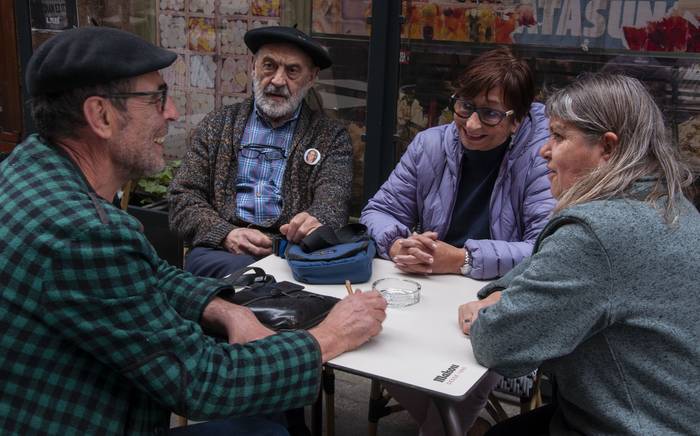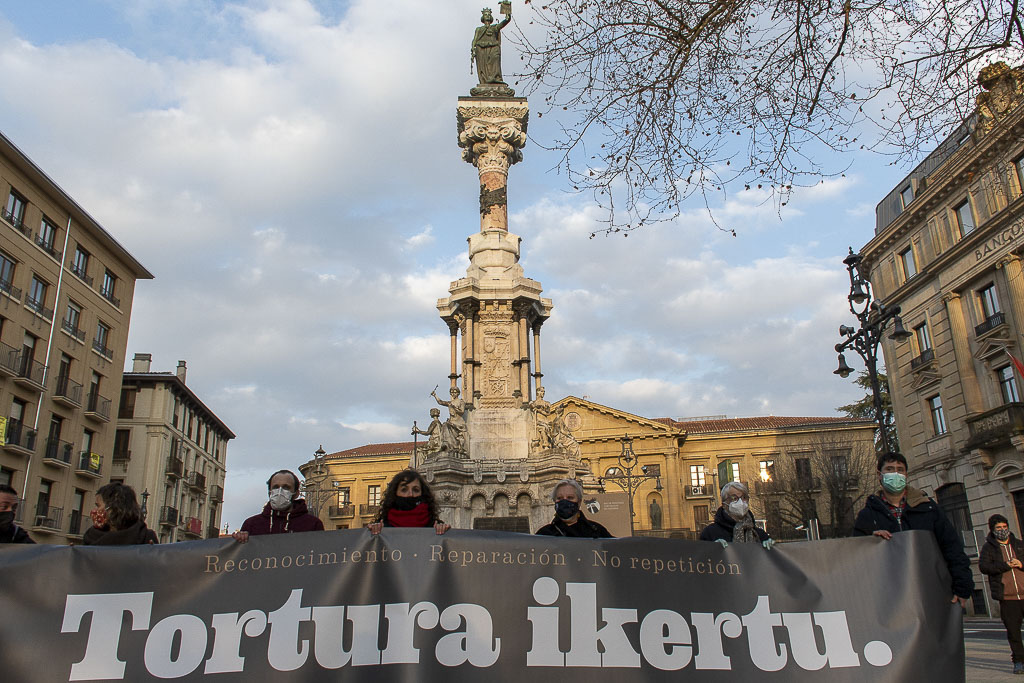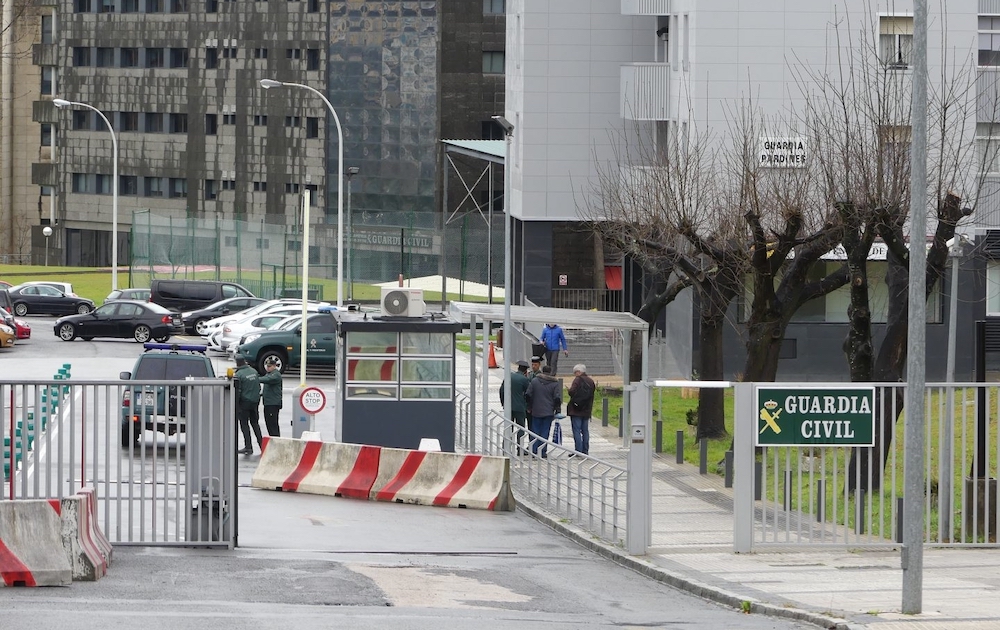Audio showing that at Intxaurrondo's barracks, Zabraise was systematically tortured
- “Their hands have gone,” says the captain of the Civil Guard, Pedro Gómez Nieto, to the colonel of CESID, Luis Alberto Perote. The audience has released the audio, Where is Mikel? citing research for the documentary as a source. In addition to Zabraise's death, the audio provoked by the shiver indicates that the use of torture was common.

On 26 November 1985, he was arrested by Spanish Civil Guard Mikel Zabraise, along with his cousin Ion Arretxe, who was also arrested. On 15 December, his body was found in the Bidasoa River in Barakaldo. During that time, the civilian guards informed the family that he had fled in the Endarlatza area.
Will you reach Hegoalde Non dago Mikel theaters on Friday? The author of the documentary, Miguel Ángel named Pitu and Amaia Merino, discovered on Monday the audio that has opened Public.
In the video below you can hear the interview.
“You’ve stayed in the survey”
“The theme of Zabraise is very ugly,” he begins by saying to Perote Gómez Nieto, who explains what he thinks has happened. In his opinion, Zabraise "has left their hands" during the interrogation and there "has stayed with them", explains the captain to the colonel. “In Intxaurrondo?” asks Perot, and Gómez Nieto answers: “Yes, it’s my impression in the interrogation. Cardiac arrest may occur due to the presence of a bag in the head.” The captain says they have made "many mistakes" in Intxaurrondo, that during the interrogation there were people and that the relatives "were there" (I guess at the barracks, because the family approached them asking about Zabraise). He also points out that the doctor has already warned that Zabraise was already in a situation of sanitary weakness, with three surgical interventions in the last year.
“The hood should be transparent”
The audio makes it clear that torture was commonplace. Gómez Nieto tells Perote that he and the “Painted Captain” almost “were left” by another detainee, also with hood. "Did you swallow the hood?" he asks Perot. Intxaurrondo’s captain explains that “no, no,” that the problem is that from a certain moment the tortured person breathes his carbon monoxide and begins to choke. “You choke, you choke, you open your sphincters.” One of the keys is to be a transparent hood, according to Gómez Nieto: “For you to see life and take the feeling of death.”
A large part of Basque society will not be surprised to receive the content of audio, but yet listening to it causes a shudder. Perhaps the most disturbing thing is not what these two state officials say, but the coldness and routine of talking about torture, torture techniques, a citizen killed under torture or an “almost” murdered.
Perhaps the most disturbing thing is not what these two state officials say, but the coldness and routine they show when they talk about torture, torture techniques, a citizen killed under torture or an “almost” killed.
Transcription translated into Basque:
Q. The issue of Zabraise is very ugly.
G.N- Yes, very bad.
Q. Have you spoken to Philip and to them?
G.N- No, I haven't spoken. My sudden opinion -- it's been handed over to them. He's been in interrogation.
Q. Do you think they died in Intxaurrondo?
G.N- Yes, it's my impression that was in the interrogation. You may have a heart attack from the head bag. I think so. They made a lot of mistakes, that is, in the adjoining room there were relatives ... I think this has happened because the doctor said he was in poor health, that in the last year Zabraises had three surgical interventions. And she says "mom," she saw it with the cap, and I think she's stuck. We were almost left with the head of the country, the commander of the commandos who participated in the death of Captain Martín Barrios. I and Captain Pindado have almost stayed.
P-Hood.
G.N- Hood. We were almost left.
Q - Did you swallow the cap?
G.N- No, what happens is that at any given time he's breathing his carbon monoxide, then he's choking. You choke, you choke, you open your sphincters, that is, the guy chokes. And he is also looking at us, that is, it is not the substance of the matter that he sees nothing. Because, at the end of the day, it's as if it's immersed in a point ... The hood should be transparent to make you see life and feel like death.
According to the Public Journal, this audio was seized at the time by secret information and by illegal telephone wiretapping. El Mundo journalist Antonio Rubio and Manuel Cerdán published the transcript and presented it to the courts as proof of the Zabraise case, but Gómez Nieto denied that this audio was true and the courts annulled it. When it has been 35 years since they murdered Zabraise, for the first time an audio has been opened to public opinion for everyone to draw their own conclusions.
After being investigated by the Zabraise case, torturator Pedro Gómez Nieto was imprisoned as captain of lieutenant, according to Naiz. Judge Javier Gómez de Liaño imprisoned him for three months, based on papers seized by CESID to Perote in his prison cell, which linked him to the Lasa and Zabala case. However, the Government of Spain refused to dismantle these documents and the torturator was released.
Oraingoz Nafarroan, 53 izango dira estatuaren biktima aitortuak eta horietatik 27 torturaren biktimak. Floren Beraza, Txaro Buñuel, Cecilio Ruiz, Patricia Perales eta Izaskun Juarez dira aitortutako torturatu berriak.
Felipe Gonzálezen garaian Espainiako Barne ministroa zen José Barrionuevoren aurkako kereila aurkeztuko dute, Ipar Euskal Herriko errefuxiatuen aurka abiatu zuen estrategiagatik. ZEN Zona Especial Norte Planaren barruan egindako ekintzen erantzule nagusietako bat... [+]
MARTA PIKAZA GARAIGORTA (Laudio, 1968) Euskal Herriko Torturatuen Sareko kideak eta eskualdeko beste torturatu batzuek ekin diote Aiaraldean ekimena antolatzeari. Egingo dituzten urratsak eta helburuak azaldu dituzte.
Euskal Herriko Bilgune Feministak deituta elkarretaratzea egin dute Hernanin Iratxe Sorzabali elkartasuna adierazi eta "babes osoa" emateko. Inkomunikatuta egon zen uneak berriz ere epailearen aurrean kontatu behar izatea, "bizi izandakoak utzitako ondorioen... [+]
For almost a century, there has been no generation in the Basque Country that has not known torture. There are 5,379 people officially since 1960, but there are many more, because appearing publicly as tortured still hurts. And probably because nothing has changed at the base... [+]
Otsailaren 13a Torturaren Kontrako eguna izanki, Euskal Herriko Torturaren Sareak gutun publiko bat igorri du. Poliziek torturatu euskal jendeen lekukotasunak bildu, eta aitortza egiteko xedea du sare berri horrek Euskal Herri osoan. Torturatuak izan diren 5.000 pertsonei... [+]
Jar gaitezen 2025erako proposamen politiko gisa, Espainiako Auzitegi Kolonialaren (AN) epai guztiak berrikusten hasteko eta makila bakoitzak bere belari eusteko.
Unionismoarekin lerrokatutako alderdi, sindikatu eta gizarte-erakunde gehienek, eta ez bakarrik horrela... [+]
This year marks the 51st anniversary of the United Nations proclamation of International Human Rights Day on 10 December. This date has become important in Euskal Herria and the Human Rights Observatory of Euskal Herria wants to offer some elements of reflection.
Progress on... [+]
In 2006, Baltasar Garzón, then star judge, suffered a kind of revelation and drafted a practice that guaranteed the rights of those detained for terrorism. The same judge saw hundreds of incommunicado detainees pass through his room, many with obvious signs of ill-treatment,... [+]








